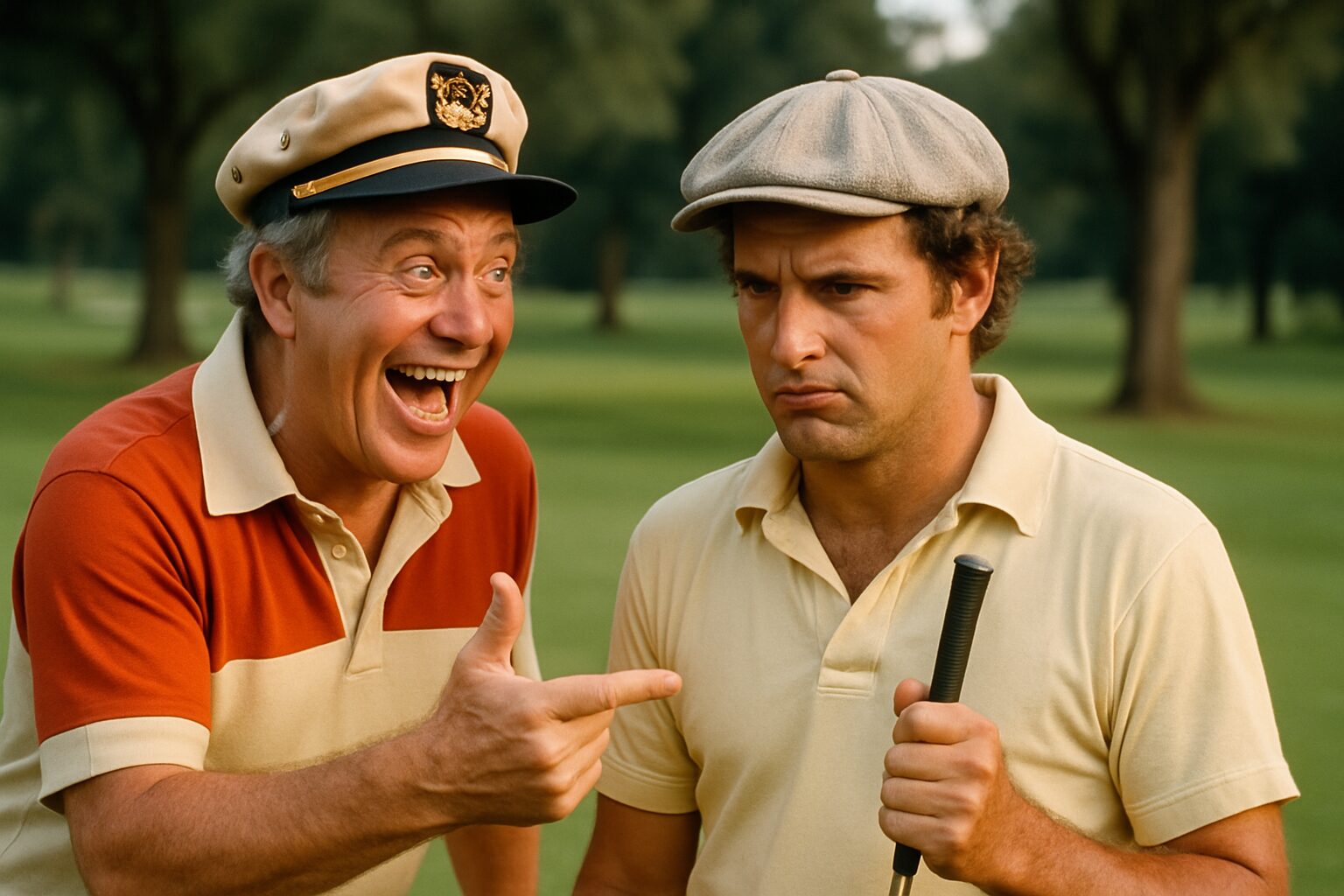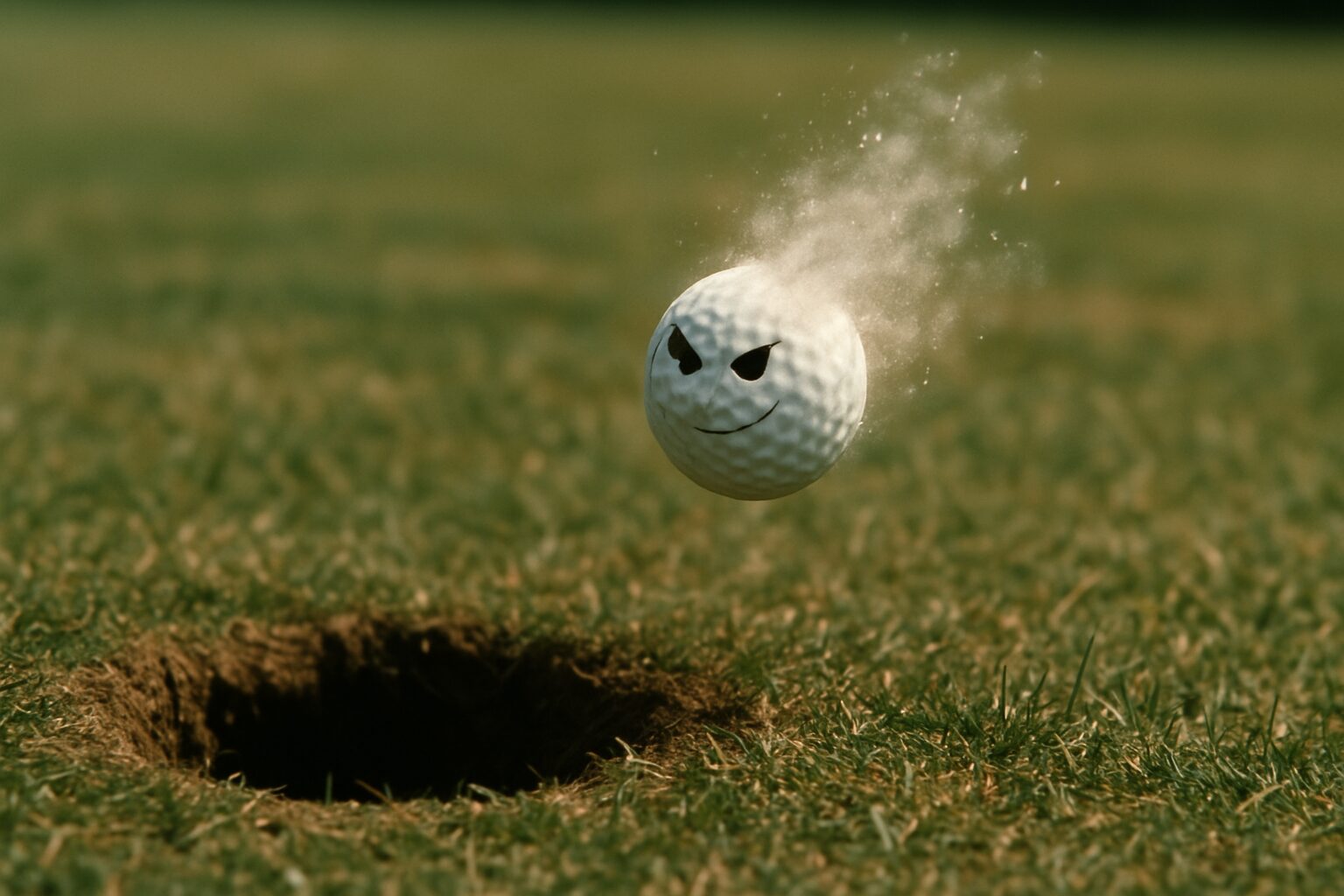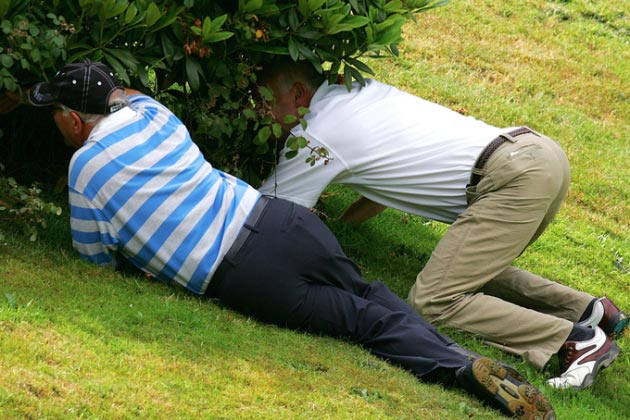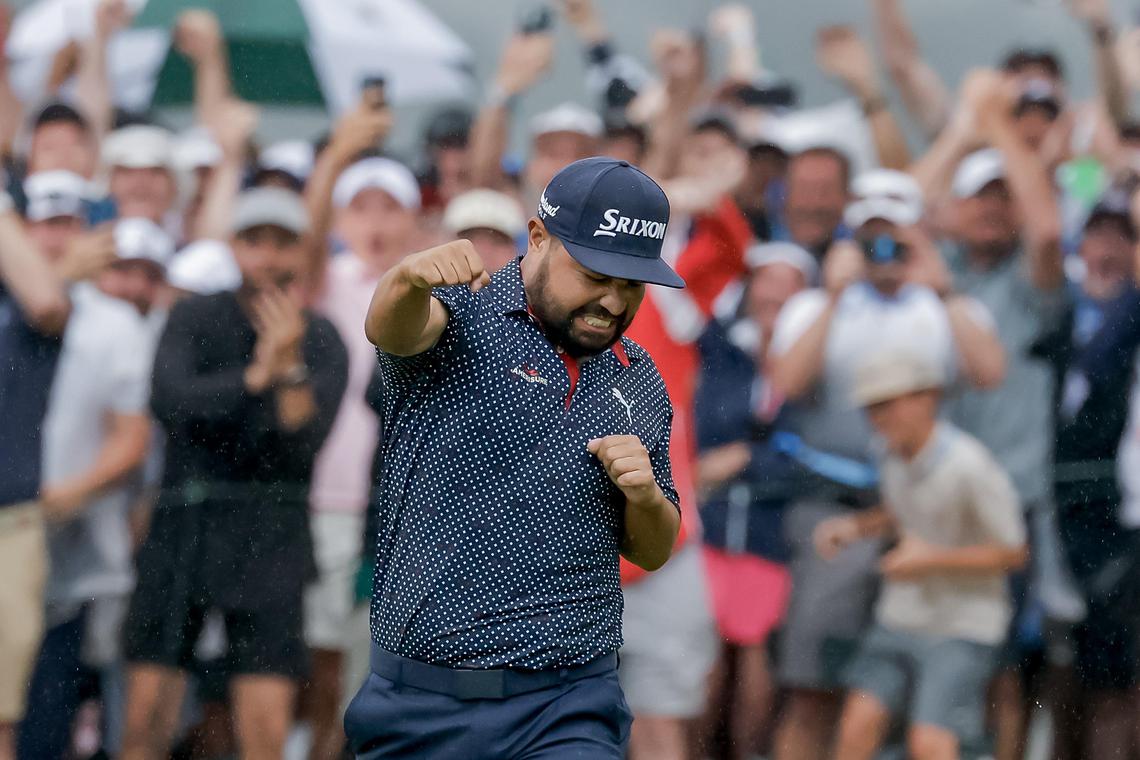Blog
How Getting Whooped by Xander Helped Phil Win the PGA at 50

Relief pitcher Tug McGraw coined the phrase “Ya Gotta Believe,” which became the rallying cry of the 1973 New York Mets. Phil Mickelson may owe him some royalties after his stunning victory at the 103rd PGA Championship at Kiawah Island, South Carolina.
Despite not having registered a top-10 finish in a major since 2016, or even a top-20 finish on the PGA Tour this season, Mickelson still believed that he could not only win again, but win another major.
“I had seen the progress but I had not seen the results,” he said ahead of this week’s Charles Schwab Challenge in Fort Worth, Texas, “and so that’s why I say, I had a belief but until you actually do it, it’s tough to really fully believe it.”
Mickelson credited playing against stiff competition with keeping him motivated to raise his game to their level. Nearly a year ago, he played a series of rounds with Xander Schauffele at The Farms Golf Club in Rancho Santa Fe, California, and Mickelson got waxed by the current World No. 6, who shot rounds of 64 and 63.
“I’m like, ‘Wow, OK. Let me try one more time,’ ” Mickelson recalled. “So, we go out next time and he shoots 62 and on a 220-yard par 3, I had to press and hit one to 4 feet and he makes a hole-in-one. I went back and talked to Amy and I’m like, ‘I don’t know how I’m going to beat this guy.’ ”
Although I believed it was possible, I can’t believe this happened ? pic.twitter.com/lysjjrPqyb
— Phil Mickelson (@PhilMickelson) May 24, 2021
At age 50, Mickelson worked harder than he ever had before, often playing as many as 45 holes a day.
“He’s one of the most competitive human beings I’ve been around, whether it’s ping-pong, doesn’t matter,” said Daniel Berger, the defending champion of the Charles Schwab Challenge. “Whatever it is, he just wants to win.”
Last month, Mickelson posted scores in the low 60s at The Farms that convinced him he was on the verge of returning to the winner’s circle.
“Then I went to Innisbrook (for the Valspar Championship) and I missed the cut and I didn’t shoot the scores and I didn’t execute on Tour the way I had been at home,” he said. “I still had a barrier to break through and that’s why I was so frustrated is that I wasn’t bringing my best out when I knew I could, and I had a glimpse there obviously at Charlotte in one round but wasn’t able to sustain it.”
Mickelson stumbled from leading the Wells Fargo Championship after an opening 64 two weeks ago, finishing T-69, but his confidence didn’t waver, said his brother and caddie Tim Mickelson.
“Right after Charlotte, he said, ‘I am going to win again soon.’ I just said, ‘Well, let’s just make sure we’re in contention on a Sunday,’ ” Tim Mickelson said.
Mickelson’s longtime agent Steve Loy echoed that sentiment. “Every time I try to tell him, look, we are running out of time, he’s going, ‘I don’t want to hear it.’ ” On the morning of the final round, Loy sent a simple text message to Mickelson, who he caddied for 30 years ago when Mickelson won his first PGA Tour title as an amateur at Arizona State.
“I said, ‘Phil, I’m getting too old for this, but you aren’t. Let’s get it done.’ ” Loy recalled.
Mickelson flew home Sunday night after the victory and stayed up celebrating with his wife, Amy. He’s back in action this week at a tournament where he’s won two of his 45 PGA Tour titles.
“I want to try to carry that momentum into a tournament that I’ve enjoyed many times and fortunate to win a couple of times on a great golf course,” he said.
I’ve failed many times in my life and career and because of this I’ve learned a lot. Instead of feeling defeated countless times, I’ve used it as fuel to drive me to work harder. So today, join me in accepting our failures. Let’s use them to motivate us to work even harder.
— Phil Mickelson (@PhilMickelson) May 11, 2021
It will be Mickelson’s last start before the U.S. Open at Torrey Pines, one of his childhood playgrounds, in San Diego, and he’ll take two weeks to prep for the one major that has eluded him all these years. Winning a sixth major championship has bolstered his belief that it isn’t too late for him to complete the career Grand Slam.
“One of two things are going to happen: Either that’s going to be my last win and I’m going to have one of the most cherished victories of my career to look back on and cherish for a long time, or I also may have kind of found a little something that helps me stay a little bit more present and helps me focus throughout round a little bit longer and maybe I can execute and play golf at the highest level for a nice extended period of time now,” Mickelson said. “I don’t know which one it’s going to be, but either way, they are both positive.”
By Adam Schupak on Golfweek
Blog
The Art of the Unsolicited Golf Tip: How to Annoy Your Playing Partners with Wisdom

There’s a certain breed of golfer, a truly special individual, who believes that every swing, every putt, every moment on the course is an opportunity for unsolicited advice. They are the self-appointed gurus of the green, the unsolicited senseis of the sand trap. And while most people recoil from such an individual, I, Ty Webb, find a certain perverse charm in their relentless, often misguided, generosity. After all, what is golf if not a canvas for human folly, painted with strokes of well-intentioned, yet utterly useless, wisdom?
Consider the scenario: your playing partner, a man (or woman) of quiet desperation, is about to address the ball. Their brow is furrowed, their stance is tentative, their very soul is screaming for a moment of peace. And then, from the depths of your profound, albeit unrequested, knowledge, you unleash it: “Keep your head down!” Or, “Slow backswing!” Or, my personal favorite, delivered with a knowing wink, “Be the ball.” The effect is instantaneous. A subtle flinch. A barely perceptible sigh. The swing, already fraught with anxiety, becomes a tortured ballet of self-doubt. The ball, inevitably, finds its way into the deepest, darkest rough.
And that, my friends, is the art. The beauty of the unsolicited golf tip lies not in its efficacy, but in its disruption. It’s a gentle reminder that even in the serene confines of the golf course, chaos lurks. It’s a subtle assertion of dominance, a playful jab at the fragile ego of your fellow golfer. It’s a way of saying, without actually saying it, “I know more than you, even if I don’t.”
Of course, there are rules to this art. Never offer a tip when someone is actually asking for one; that would be far too helpful, and thus, entirely counterproductive. Always deliver your wisdom with an air of profound nonchalance, as if the secret to a perfect swing has just casually occurred to you while contemplating the existential dread of a missed putt. And most importantly, never, ever, acknowledge the catastrophic results of your advice. A shrug, a thoughtful nod, perhaps a mumbled, “Well, that’s golf,” is all that’s required.
So, the next time you’re on the course, and you see a fellow golfer struggling, resist the urge to be genuinely helpful. Instead, embrace the art of the unsolicited golf tip. For in the gentle torment of your playing partners, you will find a profound, if slightly mischievous, joy. And who knows, perhaps in their frustration, they will, inadvertently, discover their own path to enlightenment. Or at least, a new appreciation for silence.
Blog
Why Your Golf Balls Disappear (and It’s Not the Gophers)

Ah, the vanishing golf ball. A phenomenon as old as the game itself, and one that has baffled, frustrated, and occasionally driven golfers to the brink of madness for centuries. Most theories involve gophers, those furry, subterranean saboteurs with an insatiable appetite for Titleists. Or perhaps a particularly aggressive squirrel, or a flock of unusually organized crows. But I, Ty Webb, have delved deeper into this mystery, and I can assure you, the truth is far more profound, and far more amusing.
Consider, if you will, the golf ball itself. A small, dimpled sphere, designed for one purpose: to be struck with great force and sent hurtling through the air. A life of constant abuse, of being smacked, sliced, and occasionally submerged in murky ponds. Is it any wonder, then, that some of these brave little spheres simply decide they’ve had enough? They yearn for freedom, for a life beyond the confines of the fairway. They dream of rolling unencumbered through fields of wildflowers, or perhaps, for the more adventurous among them, a quiet retirement in the depths of a particularly challenging water hazard.
I’ve seen it happen, you know. A perfectly struck shot, soaring through the air, destined for glory. And then, poof. Gone. Not a trace. No splash, no rustle in the bushes, just an empty space where a golf ball once was. It’s not a gopher, my friends. It’s an escape. A liberation. That golf ball, in its infinite wisdom, has chosen a different path. It has decided that its destiny lies not in the bottom of a cup, but in the boundless expanse of the unknown.

And who are we to judge? We, who are so obsessed with control, with precision, with the rigid rules of the game. Perhaps the golf ball, in its spontaneous disappearance, is teaching us a valuable lesson about letting go. About embracing the unexpected. About the inherent futility of trying to dictate the trajectory of a small, white sphere that clearly has a mind of its own.
So, the next time your golf ball vanishes into thin air, don’t curse the gophers. Don’t blame your swing. Instead, offer a silent salute to that brave little sphere, wherever it may be. For it has achieved what many of us can only dream of: true freedom. And who knows, perhaps one day, it will return, laden with tales of its adventures, ready to impart some profound, dimpled wisdom upon us all.

When JJ Spaun stood over a 64-foot birdie putt on the 72nd hole of the 2025 U.S. Open at Oakmont, few could have predicted what would come next. The ball meandered across the slick green, trickling over every contour, picking up speed at the crest, and then—like it had GPS—dropped center cup. Spaun dropped his putter, raised his arms, and the crowd erupted. With that single stroke, he claimed his first major title in one of the most dramatic finishes in U.S. Open history.
But how does Spaun’s putt stack up against other legendary finishes in the tournament’s storied past? Let’s break down some of the most iconic moments and see where this one lands.
1. Payne Stewart – 1999 U.S. Open at Pinehurst
Perhaps the most iconic putt in U.S. Open history came from Payne Stewart, who nailed a 15-footer for par on the 18th to win by one over Phil Mickelson. The pose—fist pump and outstretched leg—has since been immortalized in a statue at Pinehurst. What made it legendary wasn’t just the putt—it was the context: Stewart’s final major before his tragic death just months later.
Verdict: Iconic and emotional. Spaun’s putt was longer, but Stewart’s was more poetic.
2. Tiger Woods – 2008 U.S. Open at Torrey Pines
Woods drained a 12-foot birdie on the 72nd hole to force a playoff with Rocco Mediate—while basically playing on one leg. That tournament went to sudden death after an 18-hole playoff, and Tiger prevailed. This was peak Tiger drama, pain and all.
Verdict: Spaun’s putt was longer, but Tiger’s win was sheer willpower and mystique.
3. Jack Nicklaus – 1972 U.S. Open at Pebble Beach
With a 1-iron shot that hit the flagstick on 17 and a crucial birdie putt on 18, Jack sealed a dominant win. His precision and timing under pressure showed why he’s the GOAT.
Verdict: Not a putt for the win, but a signature finishing statement from Jack. Spaun’s was more electric in terms of pure putter drama.
4. Ben Hogan – 1950 U.S. Open at Merion
Hogan’s 1-iron into the 18th fairway and the par to force a playoff—just 16 months after a near-fatal car crash—remain legendary. He won the playoff and completed one of golf’s great comeback stories.
Verdict: Larger-than-life comeback. Spaun’s putt had more flair, but Hogan’s win was heroic.
5. JJ Spaun – 2025 U.S. Open at Oakmont
Let’s not underestimate what Spaun accomplished. The pressure was immense. He wasn’t the favorite. And on the most treacherous greens in golf, he buried a 64-foot bomb—a putt most players would be happy to lag to within 5 feet—to win the U.S. Open outright.
Verdict: For distance, surprise, and drama, Spaun’s putt may be the most shocking winning stroke in U.S. Open history.
Final Thoughts
JJ Spaun may not have the résumé of a Nicklaus or Woods, but for one Sunday afternoon in June 2025, he created a moment that will live in golf lore forever. Spaun’s putt was longer than Stewart’s, more unexpected than Tiger’s, and more dramatic than any final-hole finish in recent memory.
In terms of pure clutch putting? It might just be the greatest walk-off in U.S. Open history.
-

 Product Review6 years ago
Product Review6 years agoThe Perfect Practice Putting Mat Review by Jason Tenzer
-

 Blog4 years ago
Blog4 years agoLoophole Rule Offers PGA Tour Pros a Mulligan
-

 Blog4 years ago
Blog4 years ago2021 Buyer’s Guide: The Top 10 Value Golf Balls For Distance & Feel
-

 Blog4 years ago
Blog4 years agoGolf Marriage Counselor
-

 Blog6 years ago
Blog6 years ago9 Biggest Chokes Of The Past Decade
-

 Product Review6 years ago
Product Review6 years agoTHE ADJUSTABLE IRONS: WALKING STICKS GOLF CLUBS
-

 Blog4 years ago
Blog4 years agoWhat Your Golf Clubs Say About You
-

 Equipment6 years ago
Equipment6 years agoOHK Sports Interview by Jason Tenzer




















